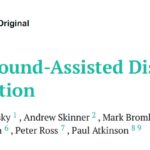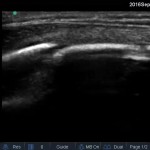Saving Brainspace with POCUS
February 8th, 2018

Here is the next study presented by Dr Tom Jelic at the EDE 3 Journal Club. It was a multicentre study done in a few centres in Canada. Those centres were St. Paul’s Hospital in Vancouver (Dr Andrew Skinner), Foothills Hospital in Calgary (Dr Mark Bromley), Saint John Regional Hospital in Saint John (Dr Paul Atkinson), […]

Have you ever used POCUS to diagnose a skull fracture? We talk about it briefly at EDE 2, although we focus on the distal radius, extremities, and some other bones a bit more. But POCUS is really useful for skull fractures. Of course, if you have ready access to a CT scan, its utility will […]

The first patient had a shoulder injury and fairly unhelpful X-rays. POCUS revealed both Humeral heads to be in proper postition. The second patient by history had a first dislocation which spontaneously reduced. He was feeling fine when I saw him. POCUS revealed a Hill–Sachs lesion confirming he had dislocated his shoulder and it was […]

We teach femoral and forearm nerve blocks at EDE 2 and a bunch more nerve blocks at EDE 3. The forearm blocks are easier than the femoral block but the indication doesn’t come up as often. At EDE 2, we often get asked about the clinical scenarios in which we would use a forearm block. […]

This fellow had an airbag/steering wheel injury. His sternum was tender over the fracture seen on POCUS. These are amazingly easy to find. Using a linear probe in the longitudinal plane, slide it cephalad and caudad along the sternum. I doubt this would have been seen on X-ray, the displacement is around 1 mm. [Editor’s […]

This patient had a displaced looking wrist. However the POCUS didn’t look particularly displaced at all. I was wondering about the discrepancy but not enough to get the old brain in gear (do U/S waves cause dementia in the operator?). I should have learned from my last POCUS on a Smith’s that they look very […]
Recent Comments